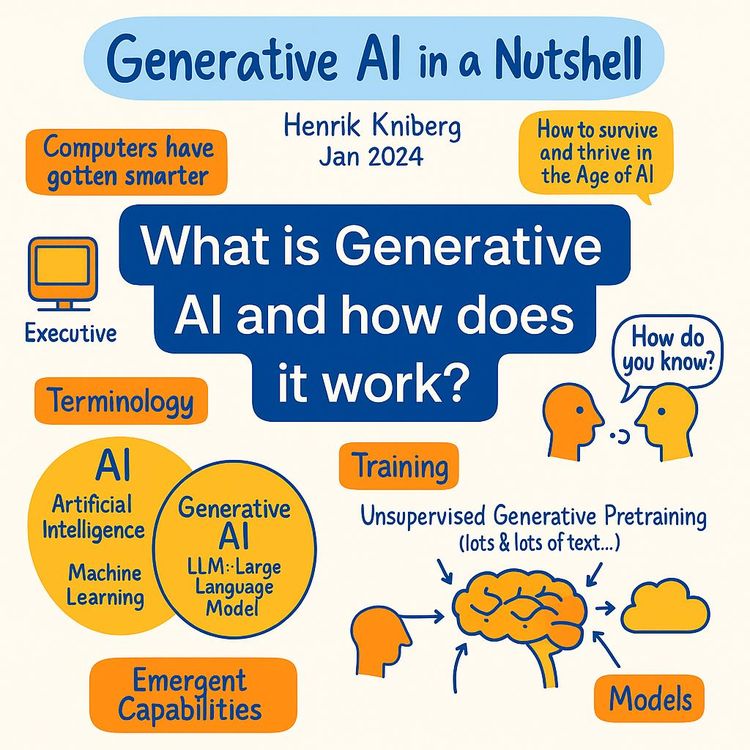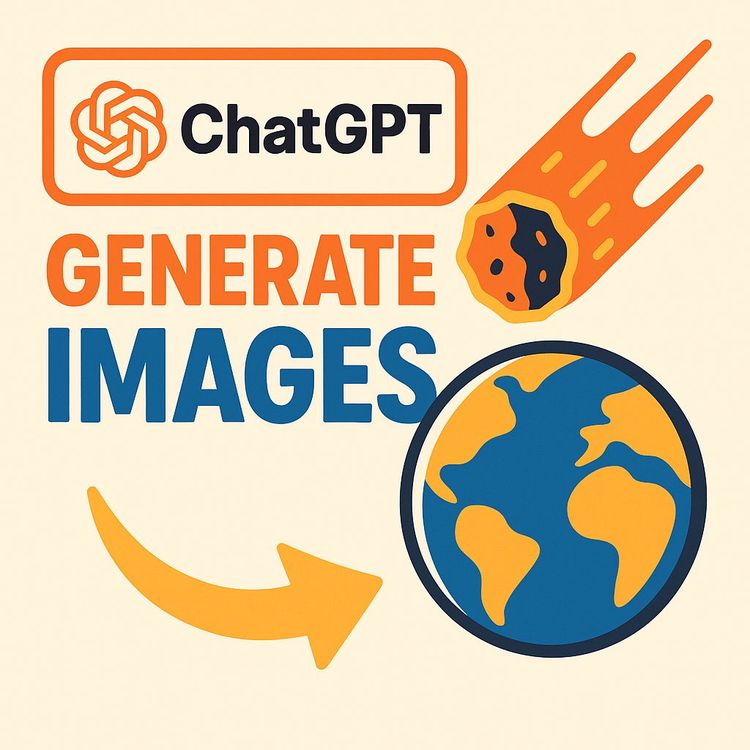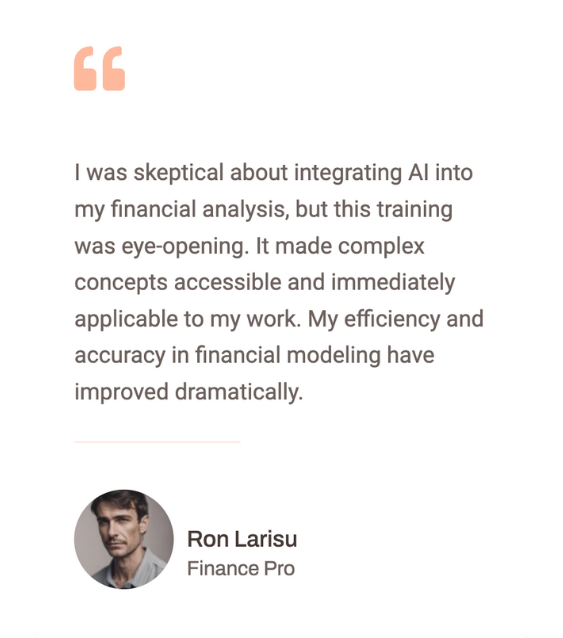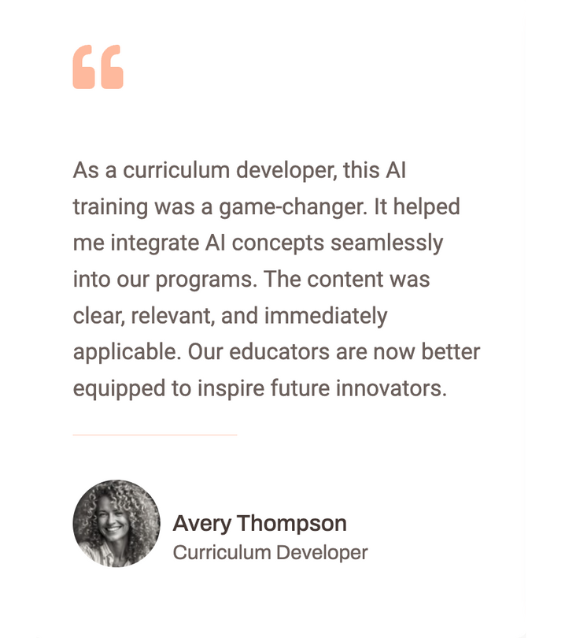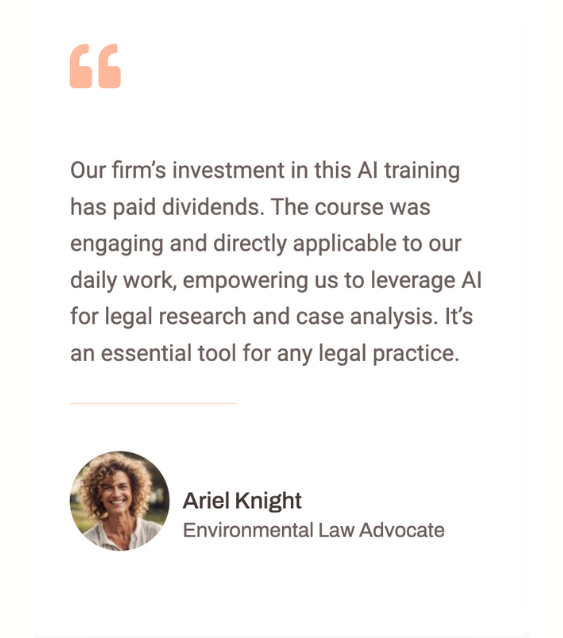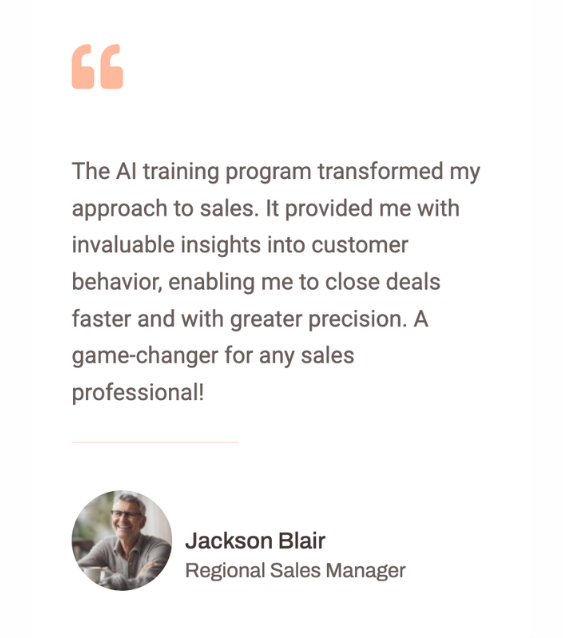RAG with LangChain: Build an LLM Pipeline in 2 Hours (Video Course)
Build a production-ready RAG system in 2 hours. No fluff,just the pieces that matter: ingestion, retrieval, chunking, embeddings, Chroma/FAISS, prompts, eval. See real examples, gotchas, and clean LangChain code with citations you can ship.
Related Certification: Certification in Building and Deploying RAG LLM Pipelines with LangChain
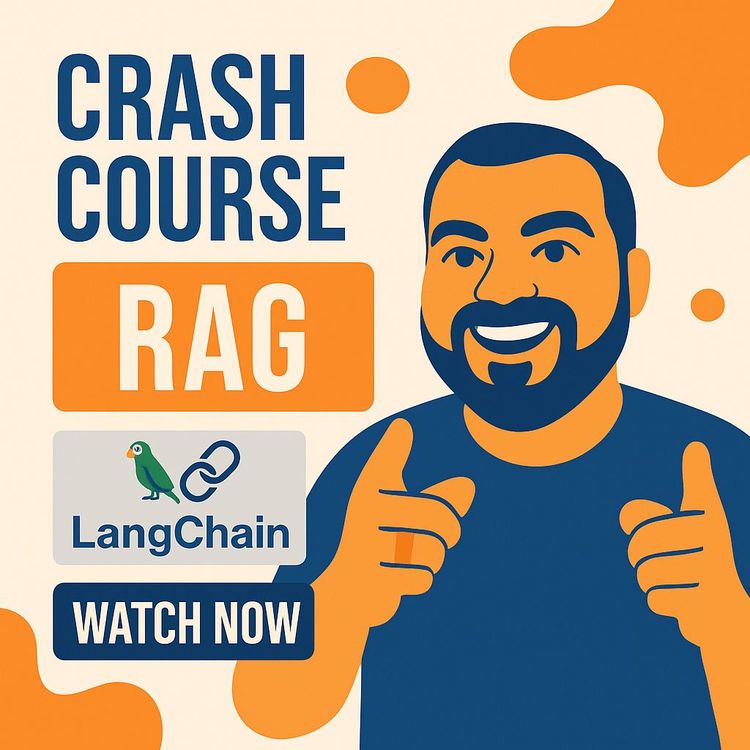
Also includes Access to All:
What You Will Learn
- Stand up a production-ready RAG pipeline with LangChain
- Ingest and index documents using loaders, chunking, and embeddings
- Implement retrieval + generation: query embedding, top-k search, and prompt augmentation with citations
- Select and manage embedding models and vector stores (ChromaDB, FAISS, all-MiniLM-L6-v2)
- Scale, secure, evaluate, and maintain a modular RAG system
Study Guide
Complete RAG Crash Course With LangChain In 2 Hours
Let's cut to the signal. You don't need another fluffy AI tutorial. You want the real mechanics behind Retrieval-Augmented Generation (RAG), the exact components to wire up, and the patterns that keep a system reliable when the stakes are high. That's what this crash course delivers.
We'll start from zero: what RAG is, how it works, why it matters, and how to build it,fast. We'll dive into the two-pipeline architecture (ingestion and retrieval-generation), chunking strategies, embedding models, vector databases (ChromaDB, FAISS), prompt design, and modular code with LangChain. Then we'll move into advanced retrieval, metadata filtering, evaluation, and scaling. Along the way, you'll see practical examples, gotchas to avoid, and habits that will keep your system clean and maintainable.
By the end, you'll be able to stand up a production-ready RAG pipeline, explain every decision you made, and improve it without breaking the whole thing. That's the goal.
What This Course Covers and Why It's Valuable
RAG solves the biggest problem in LLMs: they don't magically know your private data, and their knowledge is static. They can also hallucinate,confidently making things up. RAG fixes that by retrieving relevant information from your knowledge base and handing it to the model at the moment of generation. You get accurate, grounded, and verifiable answers,without retraining the model.
You'll learn:
- The RAG architecture (two pipelines) and why the ingestion pipeline is mission-critical.
- How to load real-world data (PDFs, HTML, CSV, SQL), chunk it, embed it, and store it.
- How retrieval works (similarity search, top-k, cosine similarity), and how to augment prompts correctly.
- How to use LangChain components: Document Loaders, Text Splitters, Embeddings, Vector Stores, Retrievers, Chains.
- How to structure your code modularly so updates and maintenance are effortless.
- How to choose embedding models, chunk sizes, vector stores, and what to monitor.
- How to add citations and confidence scores to build trust.
- How to scale, secure, and evaluate your RAG system.
Example 1:
An internal HR assistant that answers employee questions from policy PDFs with source citations (filename + page).
Example 2:
A customer support bot that pulls answers from product manuals, the knowledge base, and recent release notes,no hallucinations, just precise, cited responses.
RAG In One Sentence (Mental Model)
At query time, you grab the right pieces of your own data, feed them to the LLM, and tell it to answer based only on that context,simple and powerful.
Key Concepts and Terminology
Here's the toolbox you'll use repeatedly:
- Retrieval-Augmented Generation (RAG): Retrieve context from external data and pass it to the LLM before generation.
- LLM: The model that generates text (e.g., GPT, Llama, Gemma).
- Hallucination: Confident, wrong answers. RAG constrains this by grounding outputs in retrieved context.
- Data Ingestion Pipeline: Offline process. Load → Chunk → Embed → Store.
- Retrieval-Generation Pipeline: Online process. Query → Retrieve → Augment → Generate.
- Vector Database (Vector Store): Stores embeddings for fast similarity search (ChromaDB, FAISS, Pinecone).
- Embeddings: Numerical vectors representing meaning. Similar text = vectors close together.
- Embedding Model: Converts text to embeddings. `all-MiniLM-L6-v2` (384-dim) is a great lightweight default.
- Document Loader: Extracts content from PDFs, text, HTML, SQL, etc., into Document objects.
- Document Structure: `page_content` + `metadata` (filename, page, author, date).
- Chunking: Splitting long docs into semantically coherent pieces that fit the context window.
- Text Splitter: Automates chunking. `RecursiveCharacterTextSplitter` is popular and effective.
- Context: The retrieved chunks you hand to the model.
- Augmentation: Combining user query + retrieved context into a single prompt.
- Retriever: Interface that runs similarity search and returns relevant docs.
Example 1:
A safety compliance RAG system uses metadata filters (e.g., document type = "OSHA", region = "EU") to ensure legal accuracy for regional differences.
Example 2:
A dev documentation bot tags metadata with "version" and "module," then filters so the answers come from the correct product version only.
The RAG Architecture: Two Pipelines
RAG operates with two connected flows. Treat them like separate services you can maintain independently.
Data Ingestion Pipeline (Offline)
1) Load data (PDF, TXT, HTML, CSV, SQL, etc.).
2) Split into chunks (size + overlap).
3) Embed chunks using an embedding model (e.g., `all-MiniLM-L6-v2`).
4) Store vectors + metadata in a vector database (ChromaDB or FAISS).
Example 1:
Indexing a folder of research papers: PDFs are loaded with `PyMuPDFLoader`, chunked at 1000 characters with 200 overlap, embedded, and stored in Chroma with metadata including title, authors, and year.
Example 2:
Loading a SQL table of support tickets using a custom loader, joining with knowledge base articles by topic, tagging each chunk with "source=kb|ticket," and storing in FAISS for super-fast retrieval.
Retrieval-Generation Pipeline (Online)
1) Embed the user's query using the same embedding model as ingestion.
2) Similarity search in the vector store to retrieve top-k relevant chunks.
3) Augment the prompt with those chunks and strict instructions.
4) Generate the final answer with the LLM (optionally include citations and confidence).
Example 1:
User asks, "What's our remote work policy?" System retrieves the policy sections and returns a succinct answer plus a link to the exact PDF and page.
Example 2:
A student asks, "Explain the proof of theorem X in simpler terms." The system retrieves the relevant textbook chunks, simplifies them, and includes citations to chapters and page numbers.
Why RAG Matters (Executive Summary, Expanded)
Standard LLMs are static, general-purpose, and don't know your private data. RAG lets you inject the right context at the right time without fine-tuning. That means fast iteration, lower cost, and better control. You can update your knowledge base by re-ingesting new documents instead of retraining a model.
Key outcomes:
- Better accuracy and fewer hallucinations.
- Access to recent or proprietary data.
- Faster updates: re-index new data anytime.
- Grounded answers with citations that users can verify.
Example 1:
A finance team uploads monthly reports. The RAG assistant can reference the latest numbers without any retraining.
Example 2:
A product manager adds a new feature spec to the repository; the support bot instantly uses it to answer questions.
Deep Dive: The Data Ingestion Pipeline
This is where you win or lose. Great ingestion equals reliable retrieval.
Step 1: Load and Parse Documents
Objective: Convert various formats into clean `Document` objects with `page_content` and `metadata`.
Common loaders in LangChain:
- `PyMuPDFLoader` or `PyPDFLoader`: PDFs
- `TextLoader`: Plain text files
- `DirectoryLoader`: Batch-load all files in a directory with a specified loader
- CSV/HTML/JSON/SQL loaders and custom loaders for APIs
Metadata matters. Use it for filtering, ranking, and citations (filename, page, author, date, department, version).
Example 1:
Load PDFs: `loader = PyMuPDFLoader("policies/hr_handbook.pdf"); docs = loader.load()`; add metadata like `{ "source": "hr_handbook.pdf", "page": 12, "department": "HR" }`.
Example 2:
Load a directory of product specs with `DirectoryLoader(path, glob="**/*.md", loader_cls=TextLoader)` and annotate metadata with `product_line` and `version`.
Step 2: Chunking Documents
Objective: Create semantically coherent pieces that fit within the context window of your embedding model and LLM.
Default workhorse: `RecursiveCharacterTextSplitter`
- `chunk_size`: e.g., 1000 characters (tune as needed)
- `chunk_overlap`: e.g., 200 characters to preserve continuity across chunks
Think in terms of "one chunk = one idea." Avoid cutting tables or structured lists in half if possible.
Example 1:
Chunk a 30-page security policy into 1000-char chunks with 200 overlap; each chunk includes `section_title` in metadata.
Example 2:
Split API docs by headings first (semantic split), then apply character-based splitting to avoid breaking code examples.
Step 3: Generate Embeddings
Use an embedding model to transform each chunk into a vector. These vectors capture meaning, not just keywords.
Solid default: `all-MiniLM-L6-v2` (384-dimensional vector). Fast and surprisingly capable.
Process:
- Build a list of strings from `page_content`.
- Run through the embedding model (`model.encode([...])`).
- Keep a mapping to the original metadata.
Example 1:
`HuggingFaceEmbeddings(model_name="all-MiniLM-L6-v2")` encodes your chunks client-side for privacy and speed.
Example 2:
For heavier workloads, run embeddings on a server with batch encoding and GPU acceleration to handle millions of chunks efficiently.
Step 4: Store Vectors in a Vector Database
Two excellent options to start:
- ChromaDB: Easy to set up, supports persistence to disk, great for local and small-to-medium deployments.
- FAISS: Extremely fast similarity search; often used in-memory; can be serialized to disk.
Store: vectors + original `page_content` + `metadata`. You'll retrieve all of it later for display and filtering.
Example 1:
Chroma with persistence: `Chroma.from_documents(docs, embedding, persist_directory="db/")`; call `persist()` when done.
Example 2:
FAISS for in-memory speed: `FAISS.from_documents(docs, embedding)`; serialize with `faiss_index.save_local("faiss_store")` to reuse later.
Deep Dive: The Retrieval and Generation Pipeline
This is the live path users experience. It must be fast, accurate, and explainable.
Step 1: Embed the User Query
Non-negotiable: Use the exact same embedding model you used during ingestion. If you change models, your vector spaces won't match, and retrieval quality will collapse.
Example 1:
`query_vector = embedding.embed_query("What is the company's remote work policy?")`
Example 2:
For multi-lingual support, use a multilingual embedding model (e.g., `paraphrase-multilingual-MiniLM-L12-v2`) across both pipelines.
Step 2: Similarity Search (Retrieval)
The retriever finds top-k similar chunks to the query vector. Most systems use cosine similarity under the hood.
Tune:
- `k` (top-k): Start with 3-5 for concise answers; increase for broader queries.
- Filters: Use metadata filters to narrow by file, date, version, department.
Example 1:
`retriever = vectorstore.as_retriever(search_kwargs={"k": 4})` then `docs = retriever.get_relevant_documents(query)`.
Example 2:
Filter by department: `retriever.search_kwargs = {"k": 4, "filter": {"department": "Legal"}}` to keep answers within the legal corpus.
Step 3: Prompt Augmentation
You wrap the retrieved chunks into a prompt with explicit instructions. Clarity matters.
Use a template like:
"Use the following context to answer the question. If the answer isn't in the context, say you don't know."
Example 1:
Prompt:
"Use the following context to answer the question concisely and accurately. If you don't know from the context, say you don't know.
Context:
{context}
Question:
{query}
Answer:"
Example 2:
For citations:
"Cite the source using filename and page for every claim you make. If multiple sources conflict, summarize the conflict and cite each."
Step 4: Response Generation
The LLM produces an answer grounded in the context. You can also ask it to format the answer, include bullet points, or return JSON for structured output (like citations and scores).
Example 1:
Return structured fields:
"Return a JSON object with keys: answer, citations (list of {source, page}), and confidence (0-1)."
Example 2:
For support workflows, instruct the LLM to include next steps and a link to a troubleshooting guide when confidence is below a threshold.
Hands-On: Building a Minimal RAG With LangChain (Step-by-Step)
Below is a simple Python flow using LangChain. Replace paths and keys as needed. Keep code modular from the start.
Example 1:
Minimal Chroma pipeline:
`from langchain.document_loaders import PyMuPDFLoader`
`from langchain.text_splitter import RecursiveCharacterTextSplitter`
`from langchain.embeddings import HuggingFaceEmbeddings`
`from langchain.vectorstores import Chroma`
`from langchain.chat_models import ChatOpenAI`
`from langchain.chains import RetrievalQA`
`# 1) Load`
`loader = PyMuPDFLoader("data/hr_handbook.pdf")`
`docs = loader.load()`
`# 2) Split`
`splitter = RecursiveCharacterTextSplitter(chunk_size=1000, chunk_overlap=200)`
`chunks = splitter.split_documents(docs)`
`# 3) Embed`
`embeddings = HuggingFaceEmbeddings(model_name="all-MiniLM-L6-v2")`
`# 4) Store`
`vectordb = Chroma.from_documents(chunks, embeddings, persist_directory="db/")`
`vectordb.persist()`
`# 5) Retrieval + Generation`
`retriever = vectordb.as_retriever(search_kwargs={"k": 4})`
`llm = ChatOpenAI(temperature=0)`
`qa = RetrievalQA.from_chain_type(llm=llm, chain_type="stuff", retriever=retriever)`
`qa.run("What is our remote work policy?")`
Example 2:
FAISS-based variation with metadata filtering and a custom prompt:
`from langchain.vectorstores import FAISS`
`from langchain import PromptTemplate`
`prompt = PromptTemplate.from_template(`
`"Use the context to answer. If unknown, say you don't know.\nContext:\n{context}\nQuestion:\n{question}\nAnswer:"`
`)`
`faiss_store = FAISS.from_documents(chunks, embeddings)`
`retriever = faiss_store.as_retriever(search_kwargs={"k": 3})`
`# Filtering example: only HR docs (if your pipeline stored 'department' metadata)`
`# retriever.search_kwargs["filter"] = {"department": "HR"}`
`# Build your chain manually or with LCEL (LangChain Expression Language)`
`# Pseudocode: chain = ({"context": retriever, "question": RunnablePassthrough()} | prompt | llm | parser)`
`# result = chain.invoke({"question": "Explain PTO rollover."})`
Choosing Embedding Models: Practical Guidance
Start with `all-MiniLM-L6-v2` for speed and quality. It produces 384-dimension vectors and works well across general text domains. If your documents are highly technical or multilingual, consider specialized models,but keep the same model for both ingestion and retrieval.
Tips:
- Batch encode to save time.
- Cache embeddings; store a hash of content to avoid re-embedding unchanged text.
- Watch out for tokenization differences across models if you switch; re-index when you change models.
Example 1:
A codebase assistant might use a code-aware embedding model for better retrieval of function names and code comments.
Example 2:
A multinational HR bot uses a multilingual embedding model so employees can ask questions in their preferred language.
Vector Stores: ChromaDB vs. FAISS (and When to Use Which)
- ChromaDB: Easy setup, local persistence, good for small to medium datasets and prototyping to production.
- FAISS: Blazing fast; great for in-memory use and large-scale similarity search; often embedded into services that require minimal overhead.
Both can work in production. Pick based on your constraints: persistence, speed, memory, and operational simplicity.
Example 1:
Chroma for a knowledge bot used by 50 employees, persisted on disk, backed up nightly.
Example 2:
FAISS for a high-traffic support assistant that handles tens of thousands of queries daily with strict latency SLAs.
Metadata: Your Secret Advantage
Rich metadata unlocks filtered search, verifiable citations, and higher precision. Include source file, page, author, department, version, date, and tags like "confidential," "public," "product-line."
Best practices:
- Add structured fields you'll need for filtering and auditing.
- Include URL or file path for easy linking in the UI.
- Include a unique document ID for traceability.
Example 1:
Add `{ "source": "policy_update_Q3.pdf", "author": "J. Doe", "date": "Q3", "department": "HR" }` to every chunk for precise filtering and citations.
Example 2:
For product docs, include `{ "version": "v2.1", "module": "billing", "audience": "support" }` so your bot doesn't mix versions.
Prompting That Reduces Hallucination
Give the model boundaries and it behaves. A great prompt includes:
- Instruction to only use the provided context.
- Permission to say "I don't know."
- A request for citations (filename + page).
- A consistent format (bullets, JSON, or sections).
Example 1:
"Use only the context below to answer. If the answer isn't present, say you don't know. Include the source filename and page next to each statement."
Example 2:
"Return JSON with keys: answer, citations (list of {source, page}), confidence (0-1). If confidence < 0.6, include follow_up_questions."
Modular Design With LangChain (Maintainability Over Time)
Split your code into components so you can iterate safely:
- loaders.py: Document loaders and parsing
- splitter.py: Text splitter configuration
- embeddings.py: Embedding model wrapper
- store.py: Vector store creation and persistence
- retriever.py: Retriever setup and filters
- prompts.py: Prompt templates
- chains.py: RetrievalQA chain or LCEL pipeline
Benefits:
- Swap a component (e.g., FAISS → Chroma) without touching the rest.
- Reuse ingestion pipeline across projects.
- Isolate prompt experiments without breaking retrieval.
Example 1:
Create a `RAGPipeline` class with methods: `ingest()`, `retrieve(query)`, `answer(query)`, and `update_index(changed_docs)`.
Example 2:
Introduce A/B tests for prompt variants by swapping prompt templates in `prompts.py` behind a simple feature flag.
Practical Applications Across Sectors
RAG is where most enterprise use cases live because it safely leverages proprietary knowledge without retraining.
- Corporate: HR, IT, compliance, finance assistants.
- Education: Study helpers grounded in textbooks and papers.
- Customer Support: Fast, accurate, cited responses from manuals/KBs.
- Software Development: Natural language Q&A over large codebases and design docs.
Example 1:
Compliance assistant that answers regulator questions with page-level citations and a confidence score.
Example 2:
Engineering bot that fetches details across RFCs, architecture diagrams, and API specs and returns step-by-step instructions.
Key Insights & Takeaways (Reinforced)
- Enterprise-critical: Most practical deployments connect LLMs to internal knowledge. RAG is the direct route.
- Cost-effective: Update the knowledge base by re-ingesting documents instead of fine-tuning models.
- Ingestion quality drives accuracy: Clean parsing, good chunking, and the right embedding model are everything.
- Metadata multiplies value: Filtering, citations, and verification depend on it.
- Modular design wins: Separate data loading, embedding, storage, retrieval, and prompting. You'll thank yourself later.
Example 1:
A messy PDF parsing step led to broken sentences in chunks; retrieval quality suffered until the parsing/cleaning was fixed.
Example 2:
Adding metadata filters by "product version" cut wrong-version answers to near zero.
Action Items and Recommendations
For Development Teams
- Build a robust ingestion pipeline: test multiple loaders and chunking strategies (including semantic chunking).
- Start with `all-MiniLM-L6-v2` and benchmark. Move to heavier models only if needed.
- Design modular components from day one. Keep ingestion separate from retrieval and generation.
- Add citations and confidence scores to your output. Users trust what they can verify.
Example 1:
Run a benchmark: same dataset, vary chunk sizes (500/1000/1500) and overlaps (50/200/300) to measure retrieval F1 and answer accuracy.
Example 2:
Add a post-LLM validator that checks the answer against retrieved text and flags ungrounded claims.
For Institutions and Organizations
- Pick a document-heavy, high-value domain (HR, legal, support) for your pilot.
- Use open-source vector stores like ChromaDB or FAISS to keep costs in check initially.
Example 1:
Pilot a support bot for one product line before rolling out across all products.
Example 2:
Start with a single department's documents and a handful of high-impact queries to prove value and iterate quickly.
Advanced Retrieval Strategies
When basic top-k isn't enough, layer these techniques:
Context Re-ranking
Retrieve top-20, re-rank using a cross-encoder or an LLM to find the best 3-5 chunks. Improves precision significantly.
Example 1:
Use a cross-encoder (like `ms-marco` variants) to re-rank initial results before the final prompt.
Example 2:
Ask the LLM to predict which chunk directly answers the question ("Which chunk answers this question? Return IDs only."), then pass only those chunks.
Query Transformations
Rewrite user queries to improve retrieval: expand acronyms, add synonyms, or generate multiple paraphrases and merge results.
Example 1:
Transform "What's PTO policy?" into several paraphrases: "paid time off policy," "vacation days rollover." Merge retrieval results.
Example 2:
For domain-specific terms, map internal jargon to standardized terms before retrieval.
Hybrid Search (Sparse + Dense)
Combine semantic embeddings with keyword or BM25 search. Great for exact terms, code snippets, and rare entities.
Example 1:
Blend FAISS semantic results with a Whoosh/BM25 keyword index for code identifiers.
Example 2:
Use keyword filters for regulatory terms, then re-rank with semantic similarity.
Agentic RAG (When the System Needs Initiative)
Sometimes retrieval isn't a single step. Agents can decide to look up multiple sources, perform web retrieval, or call tools to transform data before answering. Keep it disciplined with guardrails to avoid unnecessary tool calls.
Example 1:
An agent that retrieves specs, then runs a quick calculation on limits before answering an engineering question.
Example 2:
An agent that detects missing info, asks a clarifying question, retrieves again, then answers with citations.
Quality: Evaluation and Monitoring
Don't guess,measure. Track retrieval and answer quality and iterate.
What to Measure
- Retrieval precision/recall: Are the right chunks being returned?
- Answer faithfulness: Does the answer stick to retrieved content?
- Hallucination rate: % of claims not supported by context.
- Latency: Time to first token and total response time.
Example 1:
Build a small labeled set of Q&A with ground-truth citations. Evaluate top-k and chunk sizes against this set weekly.
Example 2:
Add a guardrail that checks whether each sentence in the answer matches a retrieved sentence; flag and log anything unsupported.
Security, Privacy, and Access Control
RAG often touches confidential data. Treat security as a first-class feature.
- Access controls: Only retrieve documents the user is authorized to see.
- Data residency: Keep embeddings and source text where policy requires.
- PII handling: Mask or exclude sensitive data during ingestion, or store in a secured namespace.
Example 1:
Include a user's department and role in retrieval filters, so they only see permitted content.
Example 2:
Separate vector stores by sensitivity level. Route queries to the correct store based on user permissions.
Citations and Confidence Scores
Trust is earned with transparency. Include source and a confidence estimate with each answer.
- Citations: filename, page, and a link when possible.
- Confidence: Combine retriever similarity scores and LLM self-assessment.
Example 1:
Return `[{ "source": "hr_handbook.pdf", "page": 12, "similarity": 0.87 }]` next to each key claim.
Example 2:
If confidence < 0.6, prompt the LLM to ask a clarifying question instead of guessing.
Scaling, Performance, and Cost
RAG scales well if you design for it early.
- Cache everything: embeddings, retrieval results, and final answers where appropriate.
- Batch ingest and re-ingest changed docs only (detect via checksums or last-modified timestamps).
- Use streaming responses in the UI for perceived speed.
- Tune `k` and chunk sizes to reduce token usage without hurting accuracy.
Example 1:
Nightly job checks for updated docs, re-chunks and re-embeds only changed items, and updates the vector index incrementally.
Example 2:
Cache frequently asked questions; if the corpus hasn't changed, serve the cached answer plus citations instantly.
Common Pitfalls and How to Avoid Them
- Poor chunking: Arbitrary splits create context fragments. Use logical boundaries and overlap.
- Inconsistent embedding models: Using different models for ingestion and query destroys retrieval quality.
- Missing metadata: No filters, no citations, limited trust. Always store rich metadata.
- Over-feeding context: Too many irrelevant chunks confuse the model. Re-rank and trim.
- No evaluation dataset: You can't improve what you don't measure.
Example 1:
A team switched from one embedding model to another mid-project without re-indexing. Retrieval collapsed until they re-embedded the corpus.
Example 2:
Another team included 15 chunks per query. Answers got worse. Reducing to 4 highly relevant chunks improved precision and speed.
From Prototype to Production: A Practical Path
Here's a realistic plan you can follow:
1) Pick one domain (HR or support) with clear, repetitive questions.
2) Ingest a small, clean corpus with rich metadata.
3) Start with `all-MiniLM-L6-v2`, ChromaDB, and simple character-based chunking (1000/200).
4) Add a solid prompt with "only use context" and "I don't know."
5) Add citations and confidence to every answer.
6) Create a small evaluation set; benchmark weekly.
7) Then experiment: re-ranking, hybrid search, better chunking, query rewriting.
Example 1:
Pilot a "Benefits Q&A" assistant. After a week, add hybrid search because users ask for specific terms like "HSA" or "FSA."
Example 2:
Pilot a troubleshooting bot for one product module. Add re-ranking and code-aware embeddings when you see edge cases in logs.
FAQs You'll Ask Yourself (and Answers)
How do I pick chunk size?
Start at 800-1200 characters with 150-250 overlap. Measure. If answers miss details, increase overlap or chunk size slightly. If latency is high, reduce size or k.
Do I need to fine-tune?
Most of the time, no. RAG and strong prompts carry you far. Consider fine-tuning only when you've maxed out retrieval quality and still need specialized tone or reasoning.
Do I need a fancy vector store?
Not to start. ChromaDB and FAISS are excellent. Move to a managed solution later if you need elastic scaling and multi-tenant features.
Can I add multiple data sources?
Yes. Tag them in metadata, and consider separate vector indexes for clean separation. Use routing logic based on query intent or user role.
Practice: Questions to Test Your Understanding
Multiple Choice
1) What is the primary purpose of the Data Ingestion pipeline?
a) Generate an answer from an LLM.
b) Take a user query and find relevant documents.
c) Process, convert, and store documents in a searchable vector database.
d) Fine-tune the LLM.
Correct: c
2) Why is chunking necessary?
a) Fix grammar.
b) Fit within model context windows.
c) Add metadata.
d) Make text human-readable.
Correct: b
3) In Retrieval-Generation, what is augmentation?
a) Converting a query into an embedding.
b) Splitting a document into pieces.
c) Combining retrieved context with the user's query into a single prompt.
d) Storing vectors in the database.
Correct: c
Short Answer
1) Two main components of a LangChain Document: `page_content` (the text) and `metadata` (source info like filename, page).
2) Role of a vector store: Efficiently store and search high-dimensional vectors. It's preferred over a traditional DB for semantic search and quick nearest-neighbor lookups.
3) Why use the same embedding model for ingestion and retrieval? Because vectors must live in the same space to compare distances meaningfully.
Discussion
1) How do citations and similarity scores improve trust? They make the system's reasoning auditable and transparent.
2) Building an HR RAG: ingestion challenges might include messy PDFs, outdated docs, and inconsistent naming. Solutions: better loaders, a doc approval process, and strict metadata standards.
3) Beyond factual accuracy, RAG offers explainability, faster updates, and data privacy control compared to using a base LLM alone.
Additional Tips and Best Practices
- Start small, iterate fast. Don't index everything on day one; pick the highest-value docs first.
- Write a "document hygiene" checklist: consistent formatting, section headers, clear titles, versioning.
- Keep a "retrieval debug" mode in your app to show which chunks were used and why.
- Log failures with queries, retrieved docs, and answers; use them for continuous improvement.
Example 1:
Add an admin view showing the top queries with low confidence and the documents retrieved, so you can fix ingestion or add missing content.
Example 2:
Create a script that flags orphaned chunks (no queries retrieve them) to prune or reprocess low-quality data.
Sample Prompts You Can Reuse
Example 1:
"Answer the user's question using only the context below. If the answer isn't present, say you don't know. Provide filename and page for each claim.
Context:
{context}
Question:
{query}
Answer:"
Example 2:
"You are a helpful assistant. Use the context to answer and return JSON:
{ "answer": "...", "citations": [{ "source": "...", "page": 0 }], "confidence": 0.0 }
If confidence is below 0.6, add "follow_up_questions" as a list."
Code Structure Blueprint (Copy This Approach)
Example 1:
`project/`
` loaders.py` (PDF, HTML, DB loaders)
` splitter.py` (text splitter settings: size 1000, overlap 200)
` embeddings.py` (HuggingFaceEmbeddings wrapper)
` store.py` (Chroma or FAISS init + persist)
` retriever.py` (top-k, filters, re-ranking)
` prompts.py` (templates + output schemas)
` chains.py` (RetrievalQA or LCEL pipelines)
` evaluate.py` (metrics, test sets)
` app.py` (API/UI entrypoint)`
Example 2:
Implement `RAGService` with methods: `ingest_docs(sources)`, `query(user, text)`, `add_filters(filters)`, `set_prompt(template_id)`, `evaluate(dataset)`.
Putting It All Together: End-to-End Example Flow
Example 1:
- Ingest: HR PDFs → split (1000/200) → embed with `all-MiniLM-L6-v2` → store in Chroma with persistence.
- Retrieve: top-k=4 with filters `{ "department": "HR" }`.
- Prompt: strict "only use context," include citations.
- Output: Answer + `[{"source": "hr_handbook.pdf", "page": 12}]` + confidence 0.83.
- Evaluate: 50 curated Q&A pairs with expected sources; measure accuracy and faithfulness weekly.
Example 2:
- Ingest: Product manuals, release notes, FAQ pages → clean HTML loader → chunk by headings → semantic re-split to avoid breaking code snippets.
- Store: FAISS in-memory with nightly serialized backups.
- Retrieval: Hybrid search (BM25 + FAISS), re-rank top-20 to top-5.
- Prompt: JSON output schema with step-by-step fix instructions; requires at least one citation per step.
- Monitoring: Latency budget 600 ms for retrieval, streaming generation for the first token within 300 ms.
Verification: Did We Cover Every Essential Point?
- RAG concept and purpose: yes, with clear definition and value.
- Two pipelines and their steps: fully covered (ingestion + retrieval-generation).
- Document loaders, text splitters, embedding models, vector stores: detailed usage and examples.
- Chunking with `chunk_size` and `chunk_overlap`: included (1000/200 examples).
- Embedding model details: `all-MiniLM-L6-v2` (384-dim) and alternatives.
- Vector DB options: ChromaDB and FAISS with pros/cons and code.
- Query embedding, similarity search, top-k: explained with cosine similarity and filters.
- Prompt augmentation template: provided multiple templates.
- Response generation with citations and confidence: included with structured outputs.
- Key insights: enterprise relevance, cost-effectiveness, ingestion quality, metadata importance, modular design: covered.
- Applications: corporate, education, support, software dev: with examples.
- Action items for dev teams and organizations: detailed steps.
- Advanced strategies: re-ranking, query transforms, hybrid search, agentic RAG: included.
- Evaluation, security, scaling, caching, cost: covered.
- Practice questions and discussion prompts: included.
- Modular code patterns and a blueprint: included.
Conclusion: Turn This Into Results
You now have the full map. RAG isn't magic. It's a clean pipeline: load → chunk → embed → store, then query → retrieve → augment → generate. Do the basics well and you'll get accurate, grounded answers that people trust. Keep your ingestion pipeline tight, your metadata rich, your prompts strict, and your system modular. Then iterate with data: measure retrieval quality, monitor hallucinations, and improve the weak links.
Start small. Index a single domain with a handful of clear questions. Add citations and confidence. Build an evaluation set. Improve chunking and retrieval before you touch the model. Once your groundwork is solid, layer on re-ranking, hybrid search, and agentic steps when the use case demands it.
RAG is how you move from toy demos to real utility. Apply it to your documents, keep your system honest with citations and filters, and you'll build something your team can rely on every day.
Frequently Asked Questions
This FAQ distills everything you need to know to plan, build, and ship a Retrieval-Augmented Generation (RAG) system with LangChain. It moves from basics to advanced practices, addresses common roadblocks, and gives practical guidance for business use cases like internal knowledge assistants, support automation, and sales enablement. Each answer includes clear takeaways and examples so you can go from idea to working prototype with confidence.
What is Retrieval-Augmented Generation (RAG)?
Short answer: RAG retrieves relevant knowledge and feeds it to an LLM before it generates an answer.
RAG is a two-step process: retrieve context from a knowledge base and generate an answer grounded in that context. The pipeline uses embeddings to find semantically similar chunks, adds them to a prompt, and asks the LLM to answer based on that context. Result: fewer hallucinations, access to private and fresh information, and faster updates without retraining.
Example: An HR chatbot finds the "leave policy" chunks from your internal PDF, then answers "How many PTO days do new hires get?" and cites the source. This is far more reliable than asking a base LLM that doesn't know your policies.
What problems do traditional LLMs face that RAG helps solve?
Key fixes: knowledge cutoff, hallucinations, and lack of private data access.
LLMs are trained on static datasets and can produce confident but wrong answers when asked about niche or recent information. They also don't see your private docs by default. RAG retrieves authoritative snippets from your sources and passes them to the LLM, which greatly reduces made-up answers and enables credible citations.
Example: Finance asks about the "new expense policy." Without RAG, the model guesses. With RAG, it retrieves the updated policy PDF and answers accurately, including a link to the exact section.
How is RAG different from fine-tuning an LLM?
RAG = inject context at query time. Fine-tuning = change model weights offline.
Fine-tuning specializes tone, format, or domain generalities but is costly and slow to update. It's not ideal for facts that change. RAG keeps the base model untouched and supplies current, private content when you ask a question. You update the knowledge base, not the model.
Practical rule: use RAG for factual grounding and freshness; use fine-tuning for style, structured output, or narrow domain fluency. Many teams combine both for best results.
What are the two main pipelines in a RAG system?
Two pipelines: Data Ingestion (offline) and Retrieval-Generation (online).
- Data Ingestion: load documents, chunk them, create embeddings, and store in a vector database. This builds your searchable knowledge base.
- Retrieval-Generation: embed the user query, find similar chunks, augment the prompt with context, and generate the answer with an LLM.
This separation lets you refresh data without touching runtime logic and scale query handling independently from indexing.
What is the purpose of the Data Ingestion pipeline?
Goal: transform raw content into a searchable vector index.
The ingestion pipeline standardizes text (and metadata), splits it into chunks, turns those chunks into embeddings, and stores them in a vector database. This prepares your data for fast and accurate similarity search.
Example: You point the pipeline at a folder of PDFs and policy docs. It outputs a persistent vector store (e.g., Chroma, FAISS) that the app can query in milliseconds.
What are Document Loaders?
They convert source files into standardized documents with text and metadata.
In LangChain, loaders like PyPDFLoader (PDFs), TextLoader (.txt), or web and CSV loaders parse content and create Document objects. These objects feed into text splitting and embedding steps.
Tip: Choose loaders that preserve structure (headings, page numbers) and metadata. Better metadata improves filtering, citations, and explainability.
What is the LangChain Document structure?
Two parts: page_content (text) and metadata (key-value info).
- page_content: the chunk's actual text
- metadata: file name, page, URL, author, created_by, tags, etc.
This simple structure flows through the ingestion, retrieval, and answering steps. Good metadata enables targeted filtering (e.g., department: HR) and trustworthy citations in the final response.
Why is metadata important in RAG?
Metadata boosts precision, transparency, and control.
- Filter: limit retrieval by department, date, or doc type to avoid irrelevant context.
- Cite: show source, page, and URL for auditability.
- Route: different prompts or models by content class (e.g., legal vs. marketing).
Example: For compliance, you might only retrieve documents where metadata.region = "EU". That filter can prevent risky answers and speed up search.
What is "chunking" and why is it necessary?
Chunking splits long docs into manageable, semantically coherent pieces.
Embedding models and LLMs have input limits. Smaller, well-formed chunks improve retrieval accuracy and reduce noise in prompts. Overly large chunks waste context; overly small chunks lose meaning.
A common baseline: 800-1200 characters with 10-20% overlap using a RecursiveCharacterTextSplitter. Adjust by content type,shorter for FAQs, longer for narratives.
What are embeddings?
Embeddings are numeric vectors that capture semantic meaning.
Similar texts map to nearby vectors, enabling similarity search. You create embeddings for each chunk during ingestion and for each query at runtime. Matching is done via distance metrics (e.g., cosine similarity).
Example: "paid time off" and "vacation days" land close together, so the system retrieves the right policy even if the user's wording differs.
What is a vector database (or vector store)?
It stores embeddings and makes similarity search fast.
Options include Chroma and FAISS for local workflows and managed services for scale. The vector store returns top-k similar chunks along with metadata and scores.
Choose based on deployment needs: persistence, scaling, filtering capabilities, and integration with your stack.
How does the user query process work in the Retrieval Pipeline?
Four steps: embed query, search, retrieve, return context.
- The query is embedded with the same model used in ingestion.
- The vector store runs a similarity search to find relevant chunks.
- The app collects the top-k results and builds the context window.
- The LLM gets the augmented prompt and produces an answer.
This tight loop turns vague questions into grounded responses backed by your data.
What is the "augmentation" step in RAG?
Augmentation merges retrieved context and the user's question into one prompt.
A clear prompt template sets expectations: "Use only the context. If unknown, say you don't know." You can also include format instructions (bullets, JSON) and citation requirements.
This step is where you enforce grounding and reduce off-topic generation.
How does the final "generation" step work?
The LLM reads the augmented prompt and generates a grounded answer.
Because the model sees precise snippets, it has less room to guess. You can add constraints (tone, length, format), request citations, and instruct the model to refuse answers not supported by the context.
Business example: "Summarize Q3 hiring policy changes with links to the exact pages." The model responds with a concise summary and citations from the retrieved chunks.
What is a "retriever"?
A retriever abstracts vector search behind a simple interface.
In LangChain, you convert a vector store to a retriever and call retriever.get_relevant_documents(query). It returns Documents that you pass to your prompt.
This keeps your application code clean and lets you swap search strategies (pure embeddings, BM25, hybrid, re-ranking) without rewriting your chain.
What are some common libraries used to build a RAG system?
Typical stack: LangChain + Sentence-Transformers + a vector store + your LLM of choice.
- Orchestration: LangChain for loaders, splitters, retrievers, and chains
- Embeddings: sentence-transformers models (e.g., all-MiniLM-L6-v2)
- Vector store: Chroma, FAISS, or managed options
- LLMs: accessed via providers or local runtimes
Pick components based on data sensitivity, latency targets, and budget.
What is a modular coding approach for a RAG pipeline?
Encapsulate each concern so you can change parts without breaking the system.
Create modules/classes for data loading, embedding, vector store, retrieval, and prompting. Keep configuration (models, chunk sizes, top_k) outside the code where possible.
Benefits: easier testing, faster iteration, and clear ownership when teams collaborate.
Certification
About the Certification
Become certified in RAG with LangChain. Prove you can build and ship a production-ready LLM pipeline: data ingestion, chunking, embeddings, Chroma/FAISS retrieval, prompt design, eval, and citations. Deliver reliable, citable answers at scale.
Official Certification
Upon successful completion of the "Certification in Building and Deploying RAG LLM Pipelines with LangChain", you will receive a verifiable digital certificate. This certificate demonstrates your expertise in the subject matter covered in this course.
Benefits of Certification
- Enhance your professional credibility and stand out in the job market.
- Validate your skills and knowledge in cutting-edge AI technologies.
- Unlock new career opportunities in the rapidly growing AI field.
- Share your achievement on your resume, LinkedIn, and other professional platforms.
How to complete your certification successfully?
To earn your certification, you’ll need to complete all video lessons, study the guide carefully, and review the FAQ. After that, you’ll be prepared to pass the certification requirements.
Join 20,000+ Professionals, Using AI to transform their Careers
Join professionals who didn’t just adapt, they thrived. You can too, with AI training designed for your job.

